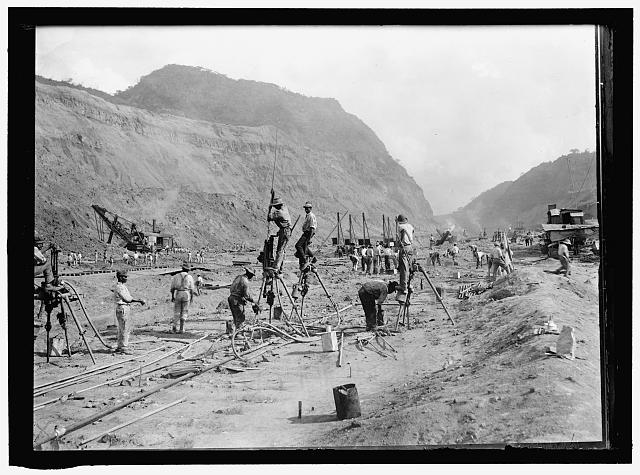The Panama Canal

After successfully building the Suez Canal through Egypt, French developer Ferdinand de Lesseps began construction on the Panama Canal in 1881, until the French abandoned the effort eight years later after 20,000 workers lost their lives to Malaria.
Panama Canal Facts
Once science had identified the Anopheles mosquito as the transmission vector of the disease, the Americans completed the big dig in 1914, although the 33-year combined construction project would see 500 deaths for each mile completed of the 51-mile manmade waterway.
The new shortcut around the Horn of Africa reduced transit time and nautical miles traveled from the West Coast of the United States to commercial ports in Europe by 42%, with a 14% reduction from Shanghai to New York City.
During construction, 160 miles of railroad tracks were laid down at the bottom of the canal, employing 300 locomotives and 4,000 ore cars to haul away the debris. Once completed, six locks lowered ships 85 feet to sea level on both the Atlantic and Pacific sides of the canal, while each lock’s physical size clocked in at 1,000 feet in length, 110 feet in width and 83 feet deep.
Despite the massive lock gates that weighed in at 400 to 700 tons each, the gates could be closed in just under 2 minutes.
The Panama Canal Expansion
After the Americans handed ownership of the canal to Panama in 1999, the advent of larger Panamax ships made passage through the Canal an incredibly tight squeeze.
As a result, the Panamanian government undertook a monumental expansion project between Sept 2007 to May of 2016. The new set of locks on the Pacific side are called the Cocoli Locks, while the new set on the Atlantic side is known as the Agua Clara Locks.
Each new lock is 1,400 feet long by 180 wide by 60 feet deep, making passage for Panamax crews a far less heart-pounding experience. On average, 14,000 ships transit the canal annually, at a toll price per ship of $150,000, while total transit time through the waterway and locks comprise a total passage time of ten hours per ship.
In 2019, the revenue generated by the canal for the Panamanian government totaled $2.6 billion dollars.
